|
|
|
Ecology and Behavior of Chickadees and Titmice: An Integrated Approach
Ken A. Otter
Oxford University Press
2007
"Chickadees and titmice are among the most popular birds in North America, due in large part to their readiness to use bird feeders, to nest in urban gardens, and even to be trained to take food from people's hands. These attributes have also made them (and their Eurasian tit counterparts) perhaps the most intensively studied bird family in the world. Long-term research in Europe has yielded some of the most comprehensive data on the impact of global warming on the breeding ecology of birds. Chickadees have amongst the best-studied and most complex vocal behaviour of any bird species, displaying one of the closest analogies to human sentence structure in the animal kingdom in their familiar chick-a-dee call. The social dominance hierarchies commonly witnessed in the form of squabbling at winter feeders are some of most stable and closely studied, and have huge impacts on controlling the lives of these small birds. Their food-storing behavior, and the brain and physiological mechanisms controlling this, has contributed significantly to our wider understanding of spatial orientation. In recent years, these birds have also been used as model species for investigating topics as diverse as inter-species hybridization, the impacts of forest fragmentation and complex systems of communication. In short, chickadees and titmice have contributed enormously to our understanding of a myriad of topics in ecology, behavior and psychology. This book brings together a range of experts from across North America who utilise chickadees or titmice as study organisms. Each chapter reviews the latest advances in evolution and behavioral research that have been accomplished through the study of North American Parids, and compares and contrasts this literature with research on their Eurasian counterparts as well as other avian families. This research level text is aimed at professional avian biologists and ornithologists as well as graduate students of avian behavioral ecology and evolution. It will also appeal to a more general audience of behavioural ecologists, neuroethologists and experimental psychologists."
|
Buy from amazon.co.uk 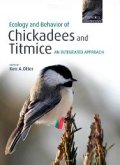
|
|
Ptilochronology: Feather Time and the Biology of BirdsThomas C. Grubb
Oxford University Press
2006
"This is the first book to summarize the methods, conceptual issues and results of studies using the interpretation of feather growth rates as an index of nutritional condition in birds. The author has coined the term ptilochronology (literally, 'the study of feather time') to describe this technique, which relies on the fact that as a feather grows it produces visible growth bars. Both the technique and its conceptual foundations have been applied worldwide to numerous studies of avian evolution, ecology, and conservation biology. The author reviews this work, chronicles the various criticisms that have been made, and describes how these have influenced the development of ptilochronology. He goes on to suggest experimental methodologies and analytical techniques to safeguard against invalid results. A final chapter summarises this new technique's contribution to avian biology, and suggests potential applications and a future research agenda. An appendix details specific measurements and describes the methodology associated with ptilochronology." Contents: Preface; Part I. Basic Ptilochronology; Introduction; Can Reduced Nutritional Condition Really Cause Narrowed Growth Bars?; Does Any Factor Other Than Nutritional Condition Control Feather Growth?; Part II. Applied Ptilochronology; Habitat Quality; Nutritional Consequences of Self-cached Food; Social Behavior; Individual Quality; Reproductive Effort; Nestling Condition; Prolonged Brood-Care; Taking Stock and Looking Ahead; References; Appendix.
|
Buy from amazon.co.uk 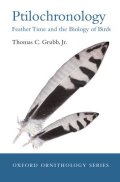
|
|
Avian FlightJohn J. Videler
Oxford University Press
2005
"This book provides an up-to-date account of our existing knowledge on the subject, offering new insights and challenging some established views. A brief history of the science of flight introduces the basic physical principles governing aerial locomotion. This is followed by a treatment of flight-related functional morphology, concentrating on the difference in shape of the arm and hand part of the wings, on the structure and function of tails, and on the shape of the body. The anatomy and mechanical properties of feathers receive special attention. Aerodynamic principles used by birds are explained in theory by simply applying Newton's laws, and in practice by showing the direction and velocity of the attached flow around an arm wing cross section and of the leading edge vortex flow above a hand wing. The Archaeopteryx fossils remain crucial in our understanding of the evolution of bird flight despite the recent discovery of a range of well-preserved ancient birds. Avian Flight offers a novel insight into the interactions between wings and air, which challenges established theories relating to the origin of bird flight." Contents: Preface; Acquisition of knowledge; The flight apparatus; Feathers for flight; Aerodynamics; Evolution of bird flight; Bird flight modes; The bird flight engine; Energy required for flight; Comparing the metabolic costs of flight.
|
Buy from amazon.co.uk 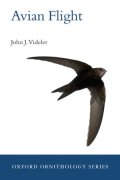
|
|
Avian Incubation: Behaviour, Environment and EvolutionEditor: D.C. Deeming
Oxford University Press
2002
"This is the first scientific review of all factors affecting incubation in avian nests. These range from nest construction, egg characteristics and patterns of embryonic development. There is an extensive section describing incubation behaviour of parents and embryos, and there are chapters reviewing brood patch physiology and the various factors determining the incubation environment, including nest microbiology. Another section provides chapters giving detailed descriptions of examples of unusual aspects of avian incubation, whilst the final section provides consideration of the ecological, energetic and fitness cost of incubation. Written by authorities in their respective fields from around the world, this provides a comprehensive review of this critical aspect of avian reproduction. Much of the data included has not been previously published, and so Avian Incubation is not only an extensive reference text but is also a valuable contribution to our basic understanding of incubation." Contents: D C Deeming: Importance and Evolution of Incubation in Avian reproduction; M H Hansell and D C Deeming: Location Structure and Function of Incubation Sites; D C Deeming: Functional Characteristics of Eggs; D C Deeming: Embryonic Development and Utilisation of Egg Components; C M Vleck: Hormonal Control of Incubation Behaviour; D C Deeming: Behaviour Patterns During Incubation; R B Brua: Parent-Embryo Interactions; R W Lea abd H Klandorf: The Brood Patch; J S Turner: Maintenance of Egg Temperature; A Ar and Y Sidis: Nest Microclimate During Incubation; D C Deeming: Patterns and Significance of Egg Turning; G K Baggott and K Graeme-Cook: Microbiology of Natural Incubation; D T Booth and D N Jones: Underground Nesting in the Megapodes; W A Calder III: Characteristics and Constraints of Incubation in Hummingbirds; F R Handsworth and M A Voss: Intermittent Incubation: Predictions and Tests for Time and Heat Allocations; C Carey: Incubation in Extreme Environments; S G Sealy, D G McMaster and B D Peer: Tactics of Obligate Brood Parasites to Secure Suitable Incubators; P N Hebert: Ecological Factors Affecting Initiation of Incubation Behaviour; T J Underwood and S G Sealy: Adaptive Significance of Egg Colouration; J M Tinbergen and J B Williams: Energetics of Incubation; J Reid, P Monaghan and R Nager: Incubation and the Costs of Reproduction; D C Deeming: Perspectives in Avian Incubation.
|
Buy from amazon.co.uk 
|
|
A Red Bird in a Brown Bag: The Function and Evolution of Colorful Plumage in the House FinchGeoffrey E. Hill
Oxford University Press
2002
"This is an account of studies of the function and evolution of colorful plumage in the House Finch. It is also an engaging study on the evolution of sexual selection in birds and a lively portrait of the challenges and constraints of experimental design facing any field investigator working with animal behavior. Part I sets the stage for modern studies of the function of plumage coloration with a review of the nineteenth and beginning of the twentieth centuries. Part II focuses on the proximate control and present function of plumage coloration. Part III takes a more explicitly evolutionary approach to the study of plumage coloration using biogeography and phylogeny to test hypotheses for why specific forms of plumage color display have evolved. It concludes with an account of comparative studies that have been conducted in the House Finch and other cardueline finches and the insight these studies have provided on the evolution of carotenoid-based ornamental coloration."
|
Buy from amazon.co.uk 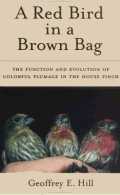
|
|
Bird Migration: A General SurveyPeter Berthold
Oxford University Press
2001 (2nd edition)
"Ten years have passed since the first edition of this book. During that time the field of bird migration has experienced many advances which are reflected in this second edition. No other book exists to bring together the vast amount of information currently available on the subject of bird migration. Includes discussion of evolution and history of bird migration, physiology, orientation mechanisms and threats to migrations and is accessible to experts as well as amateurs." Contents: Introduction; Evolution, genetic basis, and extent of bird migration; History of bird migration studies; Current methods of studying bird migration; The phenomena of bird migration; Physiological bases and control of bird migration; Orientation mechanisms; Synopsis: course and control of migration of a typical long-distance migrant passerine; Threats and the conservation and future of migrants; Evolutionary aspects of bird migration in the future; The significance of bird migration for human society; Outlook.
|
Buy from amazon.co.uk 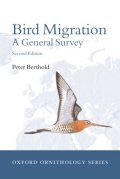
|
|
Harriers of the World: Their Behaviour and EcologyRobert E. Simmons & John R. Simmons
Oxford University Press
2000
"Here for the first time the biology of the world's harriers is treated within one cover, in readily accessible language. There are detailed comparisons of northern and southern species, descriptions of mating systems and population dynamics life histories, and insights into the selection pressures shaping the birds' life histories. The author addresses such questions as how females choose partners against their apparent self- interest, how they adjust to prevailing circumstances to produce the optimal clutch size, and what underlies variations in size dimorphism and copulation patterns. New information resulting from a DNA examination of the group reveals three new harrier species and allows construction of a new phylogeny of the harriers. The book is brought to life by fine original line drawings of these impressive birds by the author's twin brother." Contents: Preface; Introduction: Changing perspectives - from natural history to behavioural ecology; Evolution and peculiarities of the harriers; Aerial displays: Mate choice and reverse dimorphism; Of mice and harriers: Who wins the arms race?; Mating patterns: Polygyny and deception; Copulation patterns and sperm depletion; Sex ratio and egg size manipulation; Food and reproduction in the tropics; Clutch size and latitude; Synthesis; References; Index.
|
Buy from amazon.co.uk 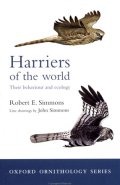
|
|
A Guide to the Birds of the PhilippinesRobert S. Kennedy, Pedro C. Gonzales, Edward C. Dickinson, Hector C. Miranda, Jr. & Timothy H. Fisher
Oxford University Press
2000
This guide covers all 572 species of birds known to occur within the 7100 islands that make up the Philippines. The Philippine avifauna includes some 170 endemics - species that are not found anywhere else in the world - and is thus of interest to avid birders around the world. Many of these species are also endangered, due to the high levels of habitat destruction in the Philippine forest, and this book is also urgently needed by conservation workers in the region. The guide is illustrated by 72 specially painted colour plates that show all but the three most recently described species. Its text gives detailed information about the plumage, voice, range, distribution, status, habitat, life history and behaviour of the birds and is accompanied by distribution maps for all the species described.
|
Buy from amazon.co.uk 
|
|
The Evolution of Avian Breeding SystemsJ. David Ligon
Oxford University Press
1999
"The Evolution of Avian Breeding Systems" deals with three of the most conspicuous and fascinating aspects of the reproductive biology of birds: sexual selection, parental care, and mating systems. Ever since Darwin, birds have provided much of the stimulus for study of these interrelated topics. Researchers have been fascinated by the extent of sexual dimorphism in plumage colours among avian species, and the puzzling development of flamboyant ornamentation or complex courtship displays in male birds. This book provides empirical assessments of the main theories of mate choice by females, and also includes related topics such as the role of sexual selection in speciation. Although most avian species are socially monogamous, others exhibit polygamy, cooperative and classical polyandry, or lek-promiscuity. The effects of extra pair copulations on paternity, as well as their possible effects on the evolution of mating systems are also considered. Chapters devoted to each of the major mating system summarize current thinking about the factors maintaining them. Throughout the book, theoretical discussion is illustrated with examples, drawn from work on a wide range of avian species. This is the first book to combine the themes of sexual selection, parental care, and mating systems, and to focus exclusively on birds. It will be welcomed by researchers in animal behaviour and ornithology with an interest in mating systems, as well as by graduate and advanced undergraduate students taking courses in this area. It is illustrated throughout with original line drawings."
|
Buy from amazon.co.uk 
|
|
Parasitic Birds and Their Hosts: Studies in CoevolutionEditors: Stephen I. Rothstein & Scott K. Robinson
Oxford University Press
1999
"This book is the first to present a comprehensive overview of the diverse kinds of birds and interactions involved in avian brood parasitism. This phenomenon has attracted the interests of naturalists and evolutionists since Darwin, yet very few researchers applied modern evolutionary theory and experimental methods to the study of the adaptations for and against brood parasitism by parasitic birds and their hosts until 25 years ago. The amount of work being done on parasitic birds has grown at an accelerating rate in the last decade as numerous researchers have begun to pursue the study of these birds." Contents:
Preface; Dedication to Herbert Friedmann; Section 1 - Overview and Commentary; Stephen I. Rothstein and Scott K. Robinson: Ch. 1: The Evolution and Ecology of Brood Parasitism; Section 2 - Coevolution Between Cuckoos and Their Hosts; Nicholas N. Davies and Michael de L. Brooke: Ch. 2: Cuckoos Versus Hosts: Experimental Evidence for Coevolution; Hiroyoshi Higuchi: Ch. 3: Host Use and Egg Color of Japanese Cuckoos; Hiroshi Nakamura, Satoshi Kubota, and Reiko Suzuki: Ch. 4: Coevolution
Between the Common Cuckoo and Its Major Hosts in Japan: Stable Versus Dynamic Specialization on Hosts; Manuel Soler, Juan J. Soler, and Juan G. Martinez: Ch. 5: Duration of Sympatry and Coevolution Between the Great Spotted Cuckoo and its Primary Host, the Magpie; Luis Arias-de-Reyna: Ch. 6: Coevolution of the Great Spotted Cuckoo and its Hosts; Brian J. Gill: Ch. 7: Behavior and Ecology of the Shining Cuckoo Chrysococcyx lucidus; Robert B. Payne and Laura L. Payne: Ch. 8: Nestling
Eviction and Vocal Behavior in the Australian Glossy Cuckoos Chrysococcyx Basalis and C. lucidus; Section 3 - Coevolution Between Cowbirds and Their Hosts; Rosendo M. Fraga: Ch. 9: Interactions of the Parasitic Screaming and Shiny Cowbirds with a Shared Host, the Bay-winged Cowbird; Spencer G. Sealy, Diane L. Neudorf, Keith A. Hobson, and Sharon A. Gill: Ch. 10: Nest Defense by potential Hosts of the Brown-headed Cowbird: Methodological Approaches, Benefits of Defense, and Coevolution; Gustavo
H. Kattan: Ch. 11: Impact of Brood Parasitism: Why do House Wrens Accept Shiny Cowbird Eggs?; Section 4 - Models of Parasite-Host Coevolution: Equilibrium Versus Lag; Arnon Lotem and Hiroshi Nakamura: Ch. 12: Evolutionary Equilibria in Avian Brood Parasitism: An Alternative to the "Arms Race-Evolutionary Lag" Concept; Eivan Roskaft and Arne Moksnes: Ch. 13: Coevolution Between Brood Parasites and Their Hosts: An Optimality Theory Approach; Ian G. McLean and Richard F. Maloney: Ch. 14: Brood Parasitism, Recognition, and Response: The Options; Section 5 - Effects of Parasitism on Host Population Dynamics; Cheryl L. Trine, W. Douglas Robinson, and Scott K. Robinson: Ch. 15: Consequences of Brown-headed Cowbird Brood Parasitism for Host Population Dynamics; James N.M. Smith and Isla H. Myers-Smith: Ch. 16: Spatial Variation in Parasitism of Song Sparrows by Brown-headed Cowbirds; Alexander Cruz, William Post, Janes W. Wiley, Catherine P. Ortega, Tammie K. Nakamura, and John W. Prather: Ch. 17: Potential Impoacts of Cowbird Range Expansion in Florida; Section 6 - Consequences of Parasitism for the Mating Systems and Life Histories of Brood Parasites; Phoebe Barnard: Ch. 18: Variability in the Mating Systems of Parasitic Birds; Section 7 - Conspecific Brood Parasitism; Michael D. Sorenson: Ch. 19: Patterns of Parasitic Egg Laying and Typical Nesting in Redhead and Canvasback Ducks; Harry W. Power: Ch. 20: Quality Cotrol and the Important Questions in Avian Conspecific Parasitism; Anders P. Moller: Ch. 21: Density-dependent Intraspecific Nest Parasitism and Anti-parasite Behavior in the Barn Swallow Hirundo Rustica; Wendy M. Jackson: Ch. 22: Egg-discrimination and Egg-color Variability in the Northern Masked Weaver: The Importance of Conspecific Versus Interspecific Parasitism; Section 8 - Major Unresolved Questions; Stephen I. Rothstein and Scott K. Robinson: Ch. 23: Major Unanswered Questions in the Study of Avian Brood Parasitism
|
Buy from amazon.co.uk 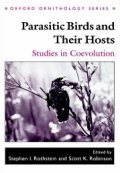
|
|
Avian Growth and Development: Evolution Within the Altricial-Precocial SpectrumEditors: J. Matthias Starck & Robert E. Ricklefs
Oxford University Press
1998
"Although birds have a rather uniform body plan and physiology, they exhibit marked variation in development type, parental care, and rate of growth. This makes them ideal for studying and understanding evolutionary adaptation. Presenting an integrative perspective of organism biology, ecology, and evolution, this book is a case study in evolutionary diversification of life histories." Contents: J. Matthias Starck and Robert E. Ricklefs: Introduction; J. Matthias Starck and Robert E. Ricklefs: Patterns of Development: The Altricial-Precocial Spectrum; Robert E. Ricklefs and J. Matthias Starck: Embryonic Development; Structural Variants and Invariants in Avian Embryonic and Postnatal Development; Carol M. Vleck and Theresa L. Bucher: Energy Metabolism, Gas Exchange, and Ventilation; G. Henk Visser: Development of Temperature Regulation; Esa Hohtola and Henk Visser: Development of Locomotion and Endothermy in altricial and precocial birds; F.M. Anne McNabb, Colin G. Scanes, and Michael Zeman: The Endocrine System; Victor Apanius: The Immune System; Heinz Duttman and H. Heiner Bergmann: Development of Behavior; J. Matthias Starck and Robert E. Ricklefs: Variation, Constraint, and Phylogeny. Comparative Analysis of Variation in Growth; Robert E. Ricklefs, J. Matthias Starck, and Marek Konarzewski: Internal Constraints on Growth in Birds; William A. Schew and Robert E. Ricklefs: Developmental Plasticity; Arie van Noordwijk and Henry Marks: Genetic Aspects of Growth; Sabine Gebhardt-Henrich and Heinz Richner: Causes of Growth Variation and its Consequences for Fitness; Marek Konarzewski, Sebastian Jooijman, and Robert E. Ricklefs: Models for Avian Growth and Development; Robert E. Ricklefs and J. Matthias Starck: The Evolution of Developmental Mode in Birds; J. Matthias Starck and Robert E. Ricklefs: Data Set of Avian Growth Parameters; Summary, Conclusions, and Research Agenda.
|
Buy from amazon.co.uk 
|
|
The Oystercatcher: From Individuals to PopulationsJohn D. Goss-Custard
Oxford University Press
1996
"This book reviews what is known about the behaviour and population ecology of a popular shorebird, from a scientific conservation perspective. The plight of this bird highlights the many conflicts of interest in coastal zones, between human activities such as shellfishing, land reclamation, barrage construction, and industrial pollution, and the needs of wildlife for food and suitable habitats. As well as detailing Oystercatcher natural history - including the well-known specialization in feeding technique shown by individuals - the authors use their field studies of individual variations in behaviour to produce population models. This novel approach provides tools for predicting how populations will respond to the many environmental changes to which the coastal zone is subject. It thus can play a role in coastal management schemes that seek to balance the needs of people and wildlife, and suggests that the same methods can be applied in other situtations." Contents: Introduction; Part I: Individual Adaptations; Food and feeding behaviour; Prey size selection and intake rate; Specialization; Feeding with other Oystercatchers; Where to feed; How Oystercatchers survive the winter; Why do Oystercatchers migrate?; Life history decisions during the breeding season; Rearing to independence; Haematopus ostralegus in perspective: comparisons with other Oystercatchers; Part II: Population Ecology; Oystercatchers and man in the coastal zone; The carrying capacity of coastal habitats for Oystercatchers; Population dynamics: predicting the consequences of habitat change at the continental scale; Conclusions; References; Index.
|
Buy from amazon.co.uk 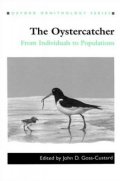
|
|
Partnerships in Birds: The Ecology of MonogamyEditor: Jeffrey M. Black
Oxford University Press
1996
"Some birds mate for life, while others have many partners. Why? In this book, fourteen classic studies of bird behaviour are brought together to compare the different partnership patterns from ecological and evolutionary perspectives. Often there is a battle of the sexes, as individual birds behave in the way that serves their best interests. Introductory and concluding chapters review the latest thinking on this fascinating subject." Contents: Initial Perspectives; Introduction: pair bonds and partnerships; The battle of the sexes and the origins of monogamy; The model family; Continuous Partnerships; Long-term monogamy in a river specialist - the Blue Duck; Do Barnacle Geese benefit from life-long monogamy?; Mate fidelity in swans; Breeding partnrship in two New World jays; Partnerships in promiscuous Splendid Fairy-wrens; Part-Time Partnerships; Divorce in the European Blackbird; Mate fidelity and divorce in ptarmigan; Causes and consequences of long-term partnerships in Cassin's Auklets; Monogamy in a long-lived seabird: the Short-tailed Shearwaters; Between and within-population variation in mate fidelity in the Great Tit; Monogamy in the Sparrowhawk; Mate fidelity in penguins; Causes and consequences of mate fidelity in Red-billed Gulls; Dispersal, demography, and the persistence of partnerships in Indigo Buntings; Concluding Perspectives; Monogamy and sperm competition in birds; Mate fidelity and divorce in monogamous birds.
|
Buy from amazon.co.uk 
|
|
The Zebra Finch: A Synthesis of Field and Laboratory StudiesRobert A. Zann, Michael Bamford
Oxford University Press
1996
"The Australian Zebra Finch is widely used by researchers and teachers in many scientific disciplines where it is the preferred subject for investigations ranging from anatomy and physiology to behavioural development and evolutionary ecology. This monograph is the first to synthesize the information on this colourful species that has accumulated during the past thirty years. It summarizes and integrates much of the laboratory work and places it in the context of the biology of the animals in the wild, with an emphasis on behaviour and ecology. This leads to a detailed understanding of Zebra Finch adaptations and life history that will further enhance the value of the species for researchers and students in behaviour, ecology, and other fields." Contents: Systematics and phylogeny; Distribution and habitat; Morphology, domestication, and moult; Feeding ecology; Drinking, water relations, and temperature regulation; Coloniality and breeding ecology; Breeding periodicity; Populations; Social and reproductive behaviour; Vocalizations; Song; Sexual selection and mate choice; Life history and adaptations.
|
Buy from amazon.co.uk 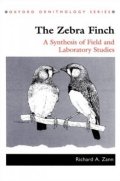
|
|
The Snow Geese of La Perouse Bay: Natural Selection in the WildFred Cooke, Robert F. Rockwell, David B. Lank
Oxford University Press
1995
"This unique title evaluates the results from one of the most significant long-term studies of birds in the late twentieth century. The authors evaluate the working of natural selection on Snow Goose plumage colour, seasonal timing of breeding, clutch size, egg size and body size. With information gathered over 26 years on 40,000 individually marked adult geese, 45,000 nests and more than 110,000 goslings at one colony in northern Manitoba, this work is a landmark in avian biology and population genetics."
The contents of the book are: introduction; the Lesser Snow Geese of La Perouse Bay; population structure and gene flow; fitness components model of Snow Goose life cycle; pairing, mating, and parental care; annual variation in fitness components; age effects; heritability of quantitative traits; plumage colour; clutch size; the timing of reproduction; egg size; body size; synthesis and conclusions; references."
|
Buy from amazon.co.uk 
|
|
Bird Population Studies: Relevance to Conservation and ManagementEditors: C.M. Perrins, J-D Lebreton and G.J.M. Hirons
Oxford University Press
1991
"There are more than one-thousand species of threatened birds in the world, while many others are valued for sport and some are serious pests. All these bird populations require management of one kind or another. This volume reviews our current understanding of avian population dynamics and explores ways in which population studies can contribute to effective conservation and management. The earlier chapters review general questions such as estimation of demographic parameters, the role of mathematical modelling, and the special problems of island populations and seabird populations. The specific chapters are devoted to great tits, snow geese, white storks, puffins, flamingos, grey partridge, red grouse, common terns, herring gulls, lesser black-backed gulls, ducks, Florida scrub jays, and northern spotted owls. The emphasis throughout is on how bird populations are regulated under various constraints and conditions and on what changes we might expect under varying environmental regimes."
|
Buy from amazon.co.uk 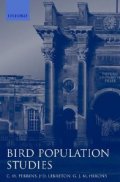
|
|
Bird-Parasite Interactions: Ecology, Evolution and BehaviourEditor: J.E. Loye
Oxford University Press
1991
"Birds are hosts to many parasites, internal and external. The parasites inevitably form a burden to the host bird and therefore may affect its ability to grow, survive, and reproduce; its behaviour; and the distribution and abundance of the whole species. In consequence, bird-parasite systems have attracted attention from diverse fields and the literature has been spread out in a wide range of specialized journals. The editors of this book have drawn together a comprehensive range of experts in the field to provide an invaluable reference of current work in bird-parasite interactions. The book is divided into four parts. The introduction provides the contemporary context of research in bird-parasite systems and presents case studies which combine theoretical concepts with experimental data. Subsequent parts focus on the ecology; behavioural responses; and the effect of parasitism on sexual selection."
|
Buy from amazon.co.uk 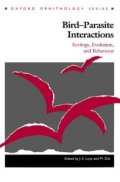
|
|